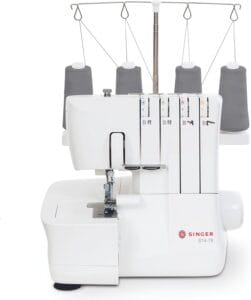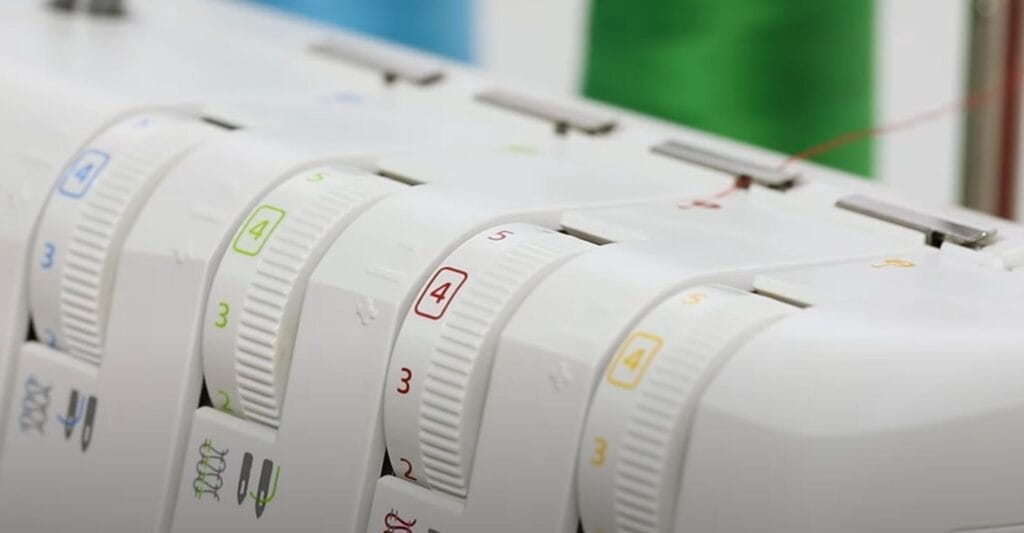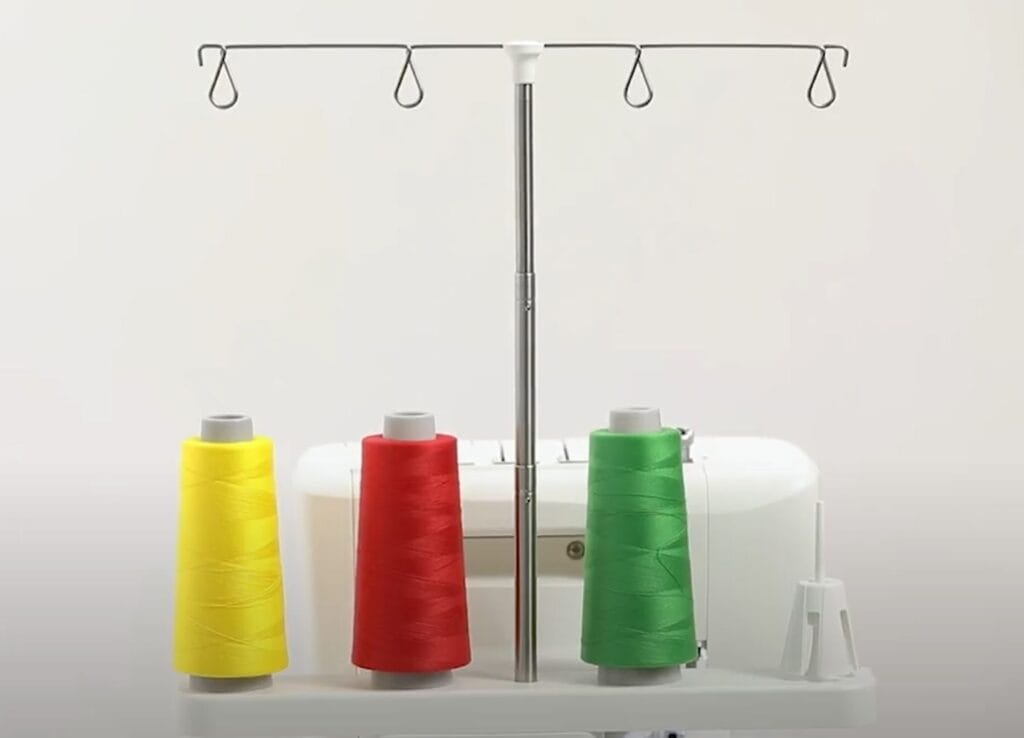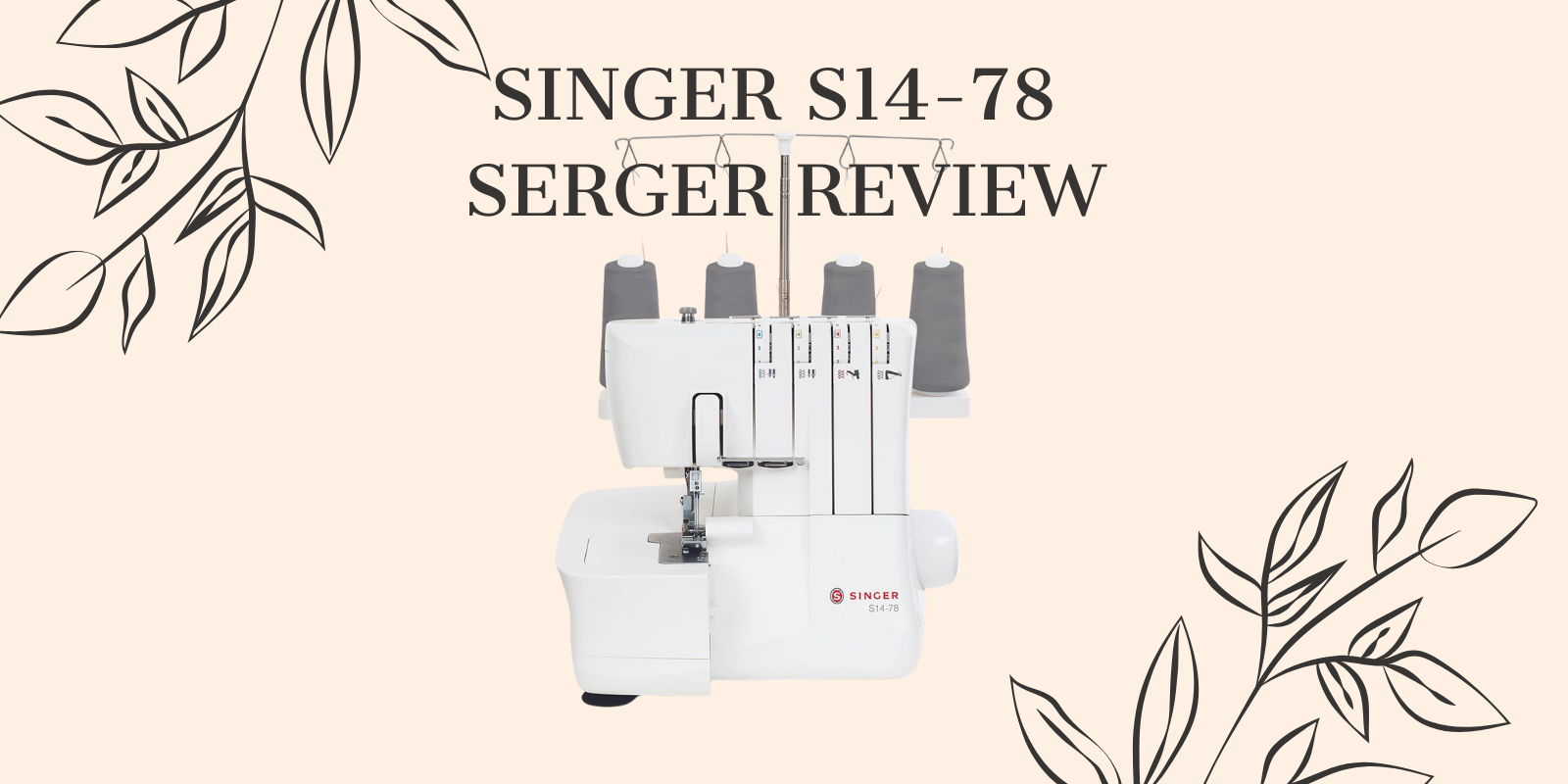Singer S14-78 Serger Review
Getting clean, finished seams on handmade garments can be tricky – especially with knits or fabrics that fray. That’s where a serger like the Singer S14-78 comes in. Positioned as the newer version of the long-popular 14SH754, the S14-78 brings familiar functionality with a few modern upgrades. It’s built for home sewists who want polished results without a steep learning curve or professional price tag.
Why Choose the Singer S14-78?

The S14-78 offers a practical mix of speed, stitch options, and user-friendly features. It handles everyday sewing tasks like finishing seams and hemming knits but also makes decorative edges easy to pull off. You can use 2, 3, or 4 threads depending on the type of stitch you need, and switching between setups is straightforward once you’re familiar with the layout.
It includes a few conveniences not found on its predecessor, like a free arm for sewing smaller, circular pieces and LED lighting for better visibility. These additions might seem minor, but they improve the overall usability and make the machine a bit more adaptable to real-world projects.
Key Features
- 2, 3, or 4 Thread Stitches – Supports a range of seams from basic overlocking to decorative finishes and rolled hems
- Color-Coded Threading System – Helps simplify setup, especially for beginners
- Differential Feed – Keeps stretch fabrics from warping and lightweight fabrics from puckering
- Free Arm – Makes it easier to work on cuffs, sleeves, and kids’ clothing
- Up to 1,300 Stitches per Minute – Fast enough for batch projects or time-saving production
- Built-in Cutting Blade – Trims excess seam allowance as you sew, saving time and creating clean edges
Included Accessories
The machine comes with a few basic tools to help you get started:
- All-Purpose Presser Foot
- Tweezers (handy for threading loopers)
- Extra Needles
- Thread Cone Adapters
While it’s not an exhaustive accessory kit, these essentials are enough for most common uses, and additional presser feet or tools can be purchased separately if needed.
Threading & Setup: Easier Than It Looks
If you’ve never used a serger before, the threading process can look complicated – but the S14-78 does a good job of easing you in. The color-coded guides are clear, and the instruction manual walks you through the correct threading order (upper looper, lower looper, right needle, then left needle). Once you’ve done it a couple of times, it becomes a fairly quick routine.
The machine’s controls are straightforward. There are dials for thread tension on the front, plus knobs and sliders for stitch length, cutting width, and differential feed. These allow for small but important adjustments depending on your fabric and thread combination. The layout is functional and doesn’t require a lot of guesswork once you get familiar with it.

Versatility in Stitching: From Stretch to Sheer
One of the S14-78’s strengths is how well it adapts to different fabric types. Using the differential feed, you can avoid the rippling effect that often shows up on knits, or stop delicate fabrics from gathering unintentionally. You can also flip that same setting the other way to create intentional ruffles or lettuce hems – great for kids’ clothes, costumes, or decorative edges.
Whether you’re finishing the inside of a linen top or adding detail to a fleece blanket, the machine holds up well. Stitch quality is clean, and the cutting blade keeps the edge tidy as it sews. Rolled hems, in particular, are easy to set up and produce nice results without much fiddling.

Performance and Use
Once set up properly, the S14-78 runs smoothly and feels reliable. It handles standard fabrics like cotton, knits, and fleece with no problem. The motor is quiet enough for regular home use, and it keeps up with fast stitching without vibrating too much or feeling unstable.
Tension adjustment can take some trial and error depending on your thread and fabric, but that’s common with most sergers. Once dialed in, the stitch consistency is solid. It’s not designed for heavy-duty materials like denim or canvas in bulk, but for typical home sewing projects, it performs well.
The free arm is a noticeable improvement over the older 14SH754, making it easier to serge sleeves, pant legs, or small accessories without bunching the fabric.
Pricing & Value
In terms of cost, the Singer S14-78 sits in a comfortable middle range. Pricing typically falls around £200–£250 or $250–$300, which is comparable to the previous model. For that price, you’re getting a full-featured serger with practical upgrades and enough flexibility for most home sewing tasks.
It’s a good value for beginners looking to invest in their first serger, but it also holds its own for more experienced sewists who need a solid backup or dedicated machine for finishing seams.
Final Thoughts
The Singer S14-78 offers a lot for its price point: adjustable settings, decent speed, and enough stitch variety to cover most home sewing needs. It takes a little patience to learn the threading system and tension controls, but once you’re comfortable with it, the machine becomes a dependable part of your sewing setup.
If you’re coming from the 14SH754 or shopping for your first serger, the S14-78 is a well-rounded choice. It doesn’t try to be high-end, but it does what it sets out to do – and does it well.

